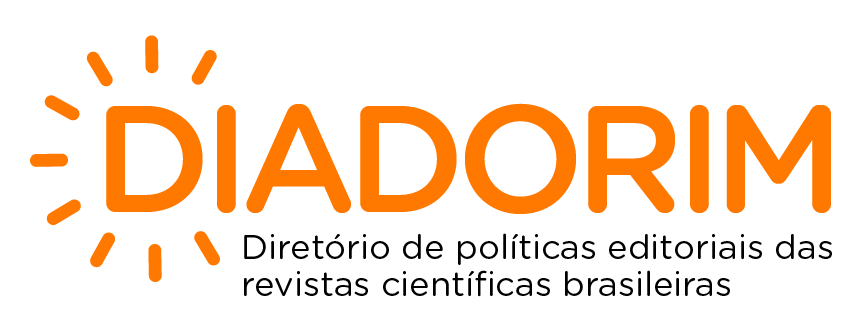The level of mental workload related to the index of difficulty of the motor task and handedness
DOI:
https://doi.org/10.20338/bjmb.v11i1.99Keywords:
Motor control, Difficulty of the task, Fitts’ law, Laterality, Grooved Pegboard test, Manual taskAbstract
BACKGROUND: Manual movements are affected by the index of difficulty of the task and handedness. High index of difficulty and execution with the non-dominant hand can increase the mental workload.
AIM: This study investigated the relation between the level of mental workload, the index of difficulty of the task, and handedness in manual movements.
METHOD: Twenty-three right-handed male students (24.1 ± 4.3 years) participated in this study. The index of difficulty in the Grooved Pegboard task was manipulated by placing and removing the pegs and manipulation of handedness was made via right and left hand execution. Two mental workload metrics were obtained by electroencephalographic analysis: EEG-cognitive index, and EEG-workload index.
RESULTS: The index of difficulty analyses indicated lower movement time when removing the pegs (low index of difficulty) compared to placing the pegs (high index of difficulty). EEG-workload index was higher when placing the pegs than removing. The handedness analyses indicated lower movement time with the right hand compared to the left hand. However, similar levels of mental workload were found.
CONCLUSION: Results suggest higher mental effort when index of difficulty is increased, but not when the left non-dominant hand is performing the task.
Downloads
References
Fitts PM. The information capacity of the human motor system in controlling the amplitude of movement. J Exp Psychol Gen 1954; 47(6), 91–381. doi: 10.1037//0096-3445.121.3.262
Schmidt RA, Lee TD. Motor control and learning: a behavioral emphasis. 5th ed. Champaign, IL: Human Kinetics; 2011.
Jiang X, Zheng B, Bednarik R, Atkins MS. Pupil responses to continuous aiming movements. Int J Hum Comput Stud 2015; 83(1): 1–11. doi: 10.1016/j.ijhcs.2015.05.006
Lage GM, Malloy-Diniz LF, Neves FS, de Moraes PHP, Corrêa H. A kinematic analysis of the association between impulsivity and manual aiming control. Hum Mov Sci 2012; 31(4): 811–823. doi: 10.1016/j.humov.2011.08.008
Poletti C, Sleimen-Malkoun R, Temprado JJ, Lemaire P. Older and younger adults’ strategies in sensorimotor tasks: Insights from Fitts’ pointing task. J Exp Psychol Hum Percept Perform 2015; 41(2): 542–555. doi: 10.1037/xhp0000033
Carnahan H, Aguilar O, Malla A, Norman R. An investigation into movement planning and execution deficits in individuals with schizophrenia. Schizophr Res 1997; 23(3): 213–221. doi: 10.1016/s0920-9964(96)00106-5
Lage GM, Malloy-Diniz LF, Neves FS., Gallo LG, Valentini AS, Corrêa H. A kinematic analysis of manual aiming control on euthymic bipolar disorder. Psychiatry Res 2013; 208(2): 140–144. doi: 10.1016/j.psychres.2012.09.046
Decety J, Michel F. Comparative analysis of actual and mental movement times in two graphic tasks. Brain Cogn 1989; 11(1): 87–97.
Personnier P, Kubicki A, Laroche D, Papaxanthis C. Temporal features of imagined locomotion in normal aging. Neurosci Lett 2010; 476(3): 146–149. doi: 10.1016/j.neulet.2010.04.017
Jax SA, Rosenbaum DA, Vaughan J. Extending Fitts’ Law to manual obstacle avoidance. Exp Brain Res 2007; 180(4): 775–779. doi:10.1007/s00221-007-0996-y
Vaughan J, Barany DA, Sali AW, Jax AS, Rosenbaum DA. Extending Fitts’ Law to three-dimensional obstacle-avoidance movements: Support for the posture-based motion planning model. Exp Brain Res 2010; 207(1-2): 133–138. doi: 10.1007/s00221-010-2431-z
Mieschke PE, Elliott D, Helsen WF, Carson RG, Coull JA. Manual asymmetries in the preparation and control of goal-directed movements. Brain Cogn 2001; 45(1): 129–140. doi:10.1006/brcg.2000.1262
Serrien DJ, Sovijärvi-Spapé MM. Hemispheric asymmetries and the control of motor sequences. Behav Brain Res 2015; 283(1): 30–6. doi: 10.1016/j.bbr.2015.01.021
Woodworth RS. The accuracy of voluntary movement. Psychol Rev 1899; 3(2), 1-106. doi: 10.1037/h0092992
Lavrysen A, Heremans E, Peeters R, Wenderoth N, Helsen WF, Feys P, Swinnen SP. Hemispheric asymmetries in eye–hand coordination. NeuroImage 2008; 39(4): 1938–1949. doi: 10.1016/j.neuroimage.2007.10.007
Verstynen T, Diedrichsen J, Albert N, Aparicio P, Ivry RB. Ipsilateral motor cortex activity during unimanual hand movements relates to task complexity. J Neurophysiol 2005; 93(3): 1209–1222. doi: 10.1152/jn.00720.2004
Lavrysen A, Heremans E, Peeters R, Wenderoth N, Feys P, Swinnen SP, Helsen WF. Hemispheric asymmetries in goal-directed hand movements are independent of hand preference. NeuroImage 2012; 62(3): 1815–1824. doi:10.1016/j.neuroimage.2012.05.033
Wickens CD. Multiple resources and performance prediction. Theor Issues Ergon Sci 2002; 3(2): 159–177.
Wickens CD. Multiple resources and mental workload. Hum Factors 2008; 50(3), 449–455. doi:10.1080/14639220210123806
Bryden PJ, Roy EA. Spatial task demands affect the extent of manual asymmetries. Laterality 1999; 4(1): 27–37. doi: 10.1080/713754327
Sivagnanasunderam M, Gonzalez DA, Bryden PJ, Young G, Forsyth A, Roy EA. Handedness throughout the lifespan: cross-sectional view on sex differences as asymmetries change. Front Psychol 2015; 5: 1–9. doi:10.3389/fpsyg.2014.01556
Oldfield RC. The assessment and analysis of handedness: The Edinburgh inventory. Neuropsychologia, 1971; 9(1): 97–113. doi: 10.1016/0028-3932(71)90067-4
Bryden PJ, Roy EA. A new method of administering the Grooved Pegboard Test: Performance as a function of handedness and sex. Brain Cogn 2005; 58(3): 258–268. doi:10.1016/j.bandc.2004.12.004
Stikic M, Johnson RR, Levendowski DJ, Popovic DP, Olmstead RE, Berka C. EEG-derived estimators of present and future cognitive performance. Front in Hum Neurosci 2011; 5: article 70. doi: 10.3389/fnhum.2011.00070
Berka C, Levendowski DJ, Cvetinovic MM, Petrovic MM, Davis G, Lumicao MN, Zivkovic VT, Popovic MV, Olmstead R. Real-EEG analysis of EEG indexes of alertness, cognition, and memory acquired with a wireless EEG headset. Int J Hum Comput Interract 2004; 17(2): 151–170. doi: 10.1207/s15327590ijhc1702_3
Berka C, Levendowski DJ, Lumicao MN, Yau A, Davis G, Zivkovic VT, Olmstead RE, Tremoulet PD, Craven PL. EEG correlates of task engagement and wental workload in vigilance, learning, and memory tasks. Aviat Space Environ Med 2007; 78(5): B231–B244.
Bryden PJ, Roy EA, Rohr LE, Egilo S. Task demands affect manual asymmetries in pegboard performance. Laterality 2007; 12(4): 364–377. doi: 10.1080/13576500701356244
Cohen J. Statistical power analysis for the behavioral sciences. Mahwah, NJ: Lawrence Erlbaum Associates; 1988
Cassenti DN, Kelley TD. Towards the Shape of Mental Workload. Proc Hum Fact Ergon Soc Annu Meet 2006; 50(11): 1147–1151.
Winstein CJ, Grafton ST, Pohl PS. Motor task difficulty and brain activity: Investigation of goal- directed reciprocal aiming using positron emission tomography. J Neurophysiol 1997; 77(3): 1581–1594.
Glover S, Wall MB, Smith AT. Distinct cortical networks support the planning and online control of reaching-to-grasp in humans. Eur J Neurosci 2012; 35(6): 909–915. doi:10.1111/j.1460-9568.2012.08018.x
Spiegel MA, Koester D, Schack T. The functional role of working memory in the (re-) planning and execution of grasping movements. J Exp Psychol Hum Percept Perform 2013; 39(5):1326–1339. doi:10.1037/a0031398
Downloads
Published
How to Cite
Issue
Section
License
Authors must declare that the work submitted is their own and that copyright has not been breached in seeking its publication. If the manuscript includes work previously published elsewhere, it is the author(s) responsibility to obtain permission to use it and to indicate that such permission has been granted.
Authors retain the copyright of their paper and grant the Brazilian Journal of Motor Behavior (BJMB) the right to first publish the work under a Creative Commons Attribution-NonCommercial-NoDerivatives license (CC BY-NC-ND). This license allows users to share the paper given the appropriate credit to the author and source and does not allow commercial uses and derivative materials to be produced.




























